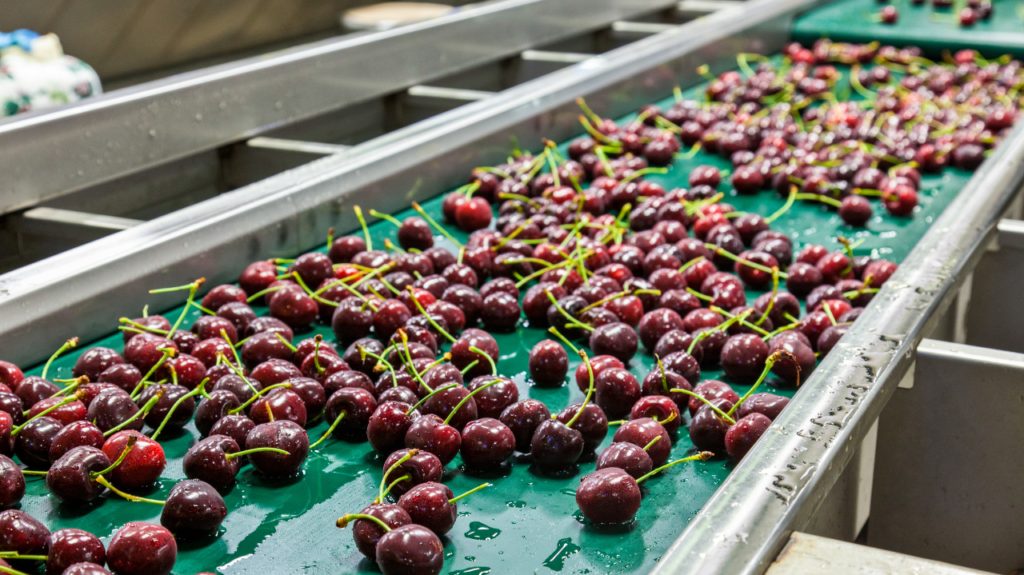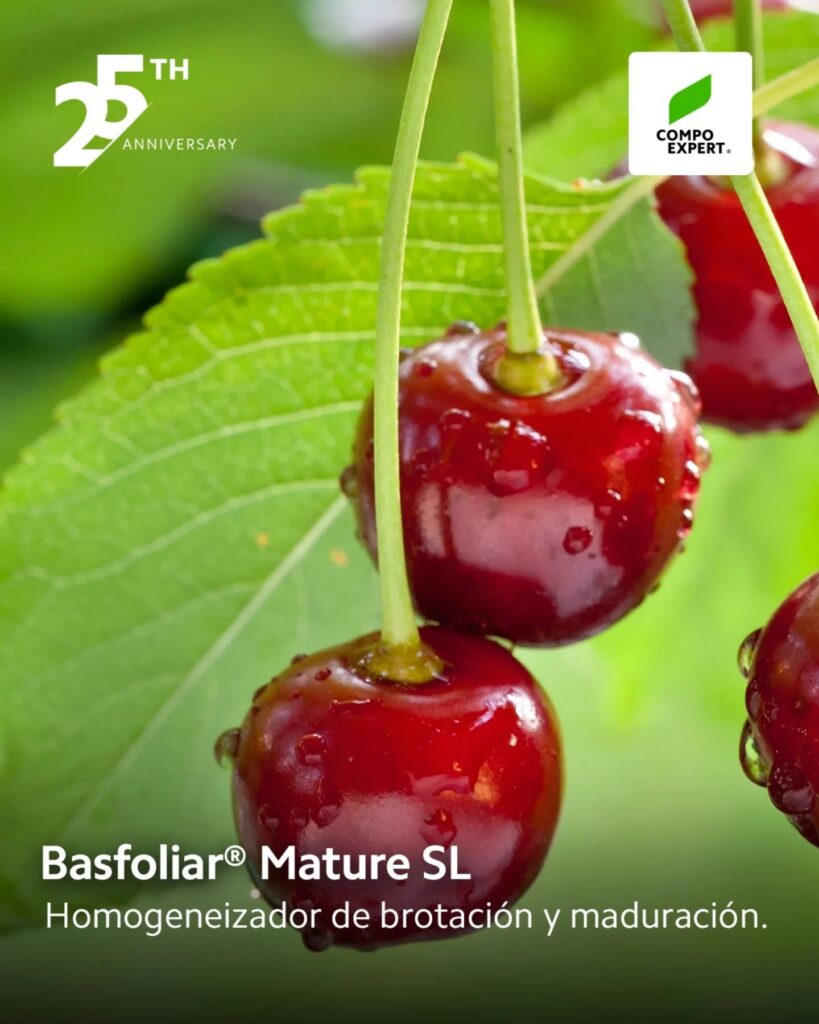By Francisca Barros, Militza Ivelic, Jessica Rodríguez/ Kimün Trio.
Now that the cherry season is over, in terms of harvest and export, we look back to analyze the main aspects that were relevant, leaving the effects of the trade shock on the Chinese market for another analysis.
Firstly, there is the large volume of fruit that the orchards were able to produce, where, at the time of carrying out this analysis, we had already exported more than 350,000 tonnes of fresh cherries, which represented an increase compared to the previous season of over 53%.
This strong increase was concentrated in just a couple of varieties, which makes us look ahead and estimate that by 2023 we will have high volumes of Santina, Lapins and Regina (IQonsulting). It is important to review this and determine what the processing requirements will be, otherwise the industry will have to develop technologies that allow it to increase processing waiting times without greatly sacrificing the condition of the fruit.
One of the first consequences we saw in the season, due to the greater fruit load (photo 1) was: low sugar levels in the Santina variety and, later, in Lapins, where although there were no major problems with soluble solids, there was less firmness or it was more uneven within the same lot. Another characteristic of this season, which could be a combined effect of load and climate, is the delay in the start of the harvests by at least 5 days, which continued until the end of the season.

Given the large volumes of fruit production, it was necessary to implement, both at the orchard level and in the collection and packing centres, adequate logistics of materials, machinery, labour and technology, in order to minimise the risks of affecting the fruit.
In this scenario, it was observed that, at the orchard level, producers took precautions to keep harvest materials in the shade, as well as an appropriate use of sponges soaked in chlorinated solution or the use of reflective tents on the fruit, which allows for an increase in ambient humidity content. Another important aspect that can be highlighted was the timely transfer of the fruit from the orchard to collection centers and subsequently, from these to the processing plants. At the collection center level, both in the orchard and in the packing plants, a greater implementation of humidification systems was observed (photo 2).

As regards hydrocooling treatment, it was observed that the main problems generated during the season include the uneven application of water, as in other cases, undersized equipment.
The first resulted in poor hydration of the fruit and pedicels and, additionally, an inadequate decrease in temperature from the pulp; this is solved by cleaning the distribution trays, grids and filters. In the second case, waiting times were generated that were longer than recommended for this species, which is a maximum of one hour once it has entered the plant. All of the above translates into an increase in the dehydration of the pedicels and in the loss of weight of the fruit.
At the processing chamber level, it was possible to observe that the fruit remained in the chamber for periods longer than optimal given the volume of fruit; this occurred especially during weeks 50 to 52, when the harvests of the most important varieties in terms of volume were concentrated. To remedy this problem, several packing plants implemented technologies that allow increasing the relative humidity inside the chambers, either through humidification systems, or by implementing the use of plastic caps to cover the bins (photo 3) and thus reduce, during this stage, the loss of water, especially from the pedicels, and thus prevent them from arriving at their destination brown or coffee-colored (photo 4).
On the other hand, it is important to note that these technologies that increase the relative humidity of the processing waiting chambers sacrifice, to a certain extent, the condition of the fruit in terms of the development of cracks (photo 5) and the development of rot, so the application of fungicides prior to this waiting period is a measure that should be considered, as well as including the use of protectors on the fruit to prevent it from getting excessively wet, especially those bins most exposed to the humidifiers.



A second issue that had to be strongly addressed this season was sanitation, safety and social distancing, where it was observed that both in the orchards and in the processing plants, significant economic and logistical efforts were made to reduce the levels of Covid-19 contagion.
In this regard, the harvesting, packaging, operation and logistics protocols were addressed with special care and attention; instructions and protocols were drawn up, hand washing and sanitizing systems were implemented permanently and staff were trained, insisting on the mandatory use of masks. Traceability systems were also worked on to be able to have the sequence of staff movement and thus avoid mass infections, achieving the proposed objectives.
At the sanitation level, but with regard to the fruit, problems could be observed in some plants in the cleaning of the water due to the large flow of water and the urgency of being able to process such a quantity of cherries. Not working with clean and well-sanitized water translates into possible problems of cross-contamination towards the fruit. The excess of organic matter in the emptying tanks inactivates the effect of the sanitizer and the recurrent water losses, so its permanent control is of vital importance.

Regarding labor, the availability of this resource was greatly reduced this last season, both at the orchard level and also at the packing plants. In orchards, this shortage meant that a percentage of fruit remained on the trees without being harvested. At the same time, at the processing level, it was very difficult to organize the shifts required for the different stages (reception, processing, palletizing and dispatch) and this forced an increase in the waiting times for the fruit to be packed and dispatched, which to some extent affects its final condition. This became particularly relevant during the peak weeks of the harvest.
On the other hand, inadequate practices in the treatment and handling of fruit were frequently observed, mainly due to the lack of training of the personnel. Thus, during the harvest, there was an increase in fruit without pedicels and bruises. In packing, among the problems detected, we can mention, for example, the poor distribution of the fruit inside the packed boxes (photo 7), jamming of boxes with fruit in different sectors (photo 8), the effects of which are mainly translated into bruises in the fruit due to compression damage (photo 9).



At the packaging level, this increase in fruit volume also affected the availability of packaging materials, especially boxes, which meant that for many people they had to go out and look for boxes in the middle of the season and end up packing them not always in the planned packaging.
In summary, it is important to highlight that, in the face of significant increases in volumes such as those observed this season, coupled with a delay in the harvest, it is absolutely necessary to work in a coordinated manner between the production, operations and logistics areas. Accurate production estimation is an indispensable tool for the coordination of all processes. Finally, timely training of personnel in each of the areas of the process is a priority, as is having human resources that are permanently monitoring the critical points of the processes involved.








